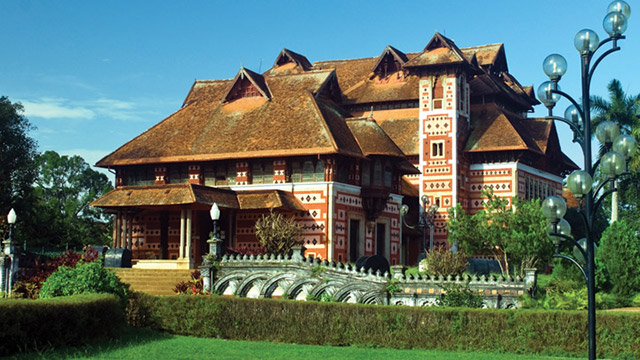The Napier Museum, located in Thiruvananthapuram, the capital city of Kerala in southern India, is a treasure trove of art, culture, and history. Named after Lord Napier, the Governor of Madras from 1866 to 1872, this museum is a prominent cultural institution in Kerala. In this article, we’ll explore the rich history and significance of the Napier Museum, as well as its diverse collections that showcase the region’s heritage.
Historical Background
The Napier Museum was established in 1855, during the reign of Maharaja Ayilyam Thirunal of Travancore, as a part of his efforts to promote education and culture in the region. Initially, it was known as the “Trivandrum Museum.” Subsequently, Lord Napier, who had a keen interest in arts and culture, played a pivotal role in its development, and the museum was renamed in his honor.
Architectural Marvel
One of the striking features of the Napier Museum is its architectural beauty. The museum building itself is an exquisite example of Indo-Saracenic architecture, a blend of Indian and Western architectural styles. Designed by the British architect Robert Chisholm, it features a mix of Mughal, Indian, and European elements. The building is adorned with ornate arches, intricate woodwork, and decorative embellishments that make it a visual delight.
Collections and Exhibits
The Napier Museum boasts an impressive collection that spans various domains of art, culture, and history. The exhibits are divided into several sections, each dedicated to a specific aspect of Kerala’s heritage:
- Natural History Section: This section includes displays of taxidermied animals, birds, and butterflies, showcasing the region’s rich biodiversity. It provides insights into Kerala’s unique flora and fauna.
- Ethnological Section: This segment features artifacts and objects that depict the cultural diversity of Kerala, including traditional costumes, musical instruments, and ceremonial masks.
- Art Gallery: The art gallery within the museum houses a remarkable collection of paintings, sculptures, and decorative arts. It includes works from various periods, with a focus on Kerala’s traditional and contemporary art.
- Zoological Section: This section is home to a wide array of marine life specimens, shells, and fossils. It offers an opportunity to explore the marine wealth of the Arabian Sea.
- Bronze Gallery: The bronze gallery showcases a magnificent collection of sculptures, including bronze idols and figurines dating back to the Chola and Chera dynasties.
- Japanese Shadow Play Collection: The Napier Museum also houses a rare collection of Japanese shadow play (Kamishibai) materials, reflecting international cultural connections.
Visitor Experience
A visit to the Napier Museum is not just an educational experience but also a visual and cultural journey. The beautifully landscaped museum grounds provide a serene environment for leisurely walks, and the picturesque setting is ideal for both art enthusiasts and families alike.
The museum frequently hosts exhibitions, workshops, and cultural events, making it a dynamic hub for art and culture in Thiruvananthapuram. The museum also has a dedicated library that serves as a resource center for researchers and scholars interested in the region’s culture and history.
The Napier Museum stands as a testament to Kerala’s commitment to preserving and promoting its rich cultural heritage. Its architectural grandeur, diverse collections, and cultural significance make it a must-visit destination for tourists and a valuable resource for scholars. A trip to the Napier Museum offers a deeper understanding of Kerala’s art, history, and traditions, making it a rewarding experience for anyone interested in the cultural tapestry of “God’s Own Country.”

